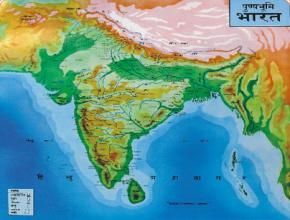INDIAN INDIC AND SAMSKRIT

India, Indica, Indian, Indic are some of the words which are in use for a long time. Hence Indian Knowledge Systems (IKS), Indic Knowledge Systems (IKS), Ancient Indian Knowledge Systems, Traditional Indian Knowledge, Indic Knowledge, etc. are widely used today in academic and intellectual debates and writings. It is well known that European scholars used the words Indic, Indica, India, etc. to denote Bharat and anything and everything that is Bharatiya. The fact that the words India and Indic have become part and parcel of the English educated elite’s collective consciousness is a classic example for our Aatmavismriti.
The term Bharatiya Knowledge Systems (BKS) may be used if the knowledge treasure hidden in all the Indian languages has to be conveyed. But when you talk in the context of Samskrit language, literature, Shastras, Vedas etc. when you mean the knowledge treasure nurtured and carried on through Samskrit literature, why don’t you use Samskrit Knowledge Systems (SKS) instead of IKS? If you use IKS, Samskrit language doesn’t benefit from it, Samskrit doesn’t come into focus, only the content gets highlighted, not the container. Knowledge treasure is the content and Samskrit language is the container. Both content and container are important. But when one is highlighted and the other is neglected, it is the duty of the responsible citizens to bring the other one also to the attention of the nation. Without container, content cannot be passed on to the future generation and it could not be nurtured further.
Samskrit language has been the principal, though not the only, vehicle of Bharatiya Knowledge Systems from the time immemorial. Sanskrit was the medium of communication, education, justice, administration, trade, commerce, art, entertainment, research and of all modes of intellectual debates till a few centuries ago. In fact it has been the pan-Asian common cultural and educational language for a few millennia. Bharat was never a monolingual country. Samskrit coexisted with and complemented all the Bharatiya languages and their literature. It has been the primary source of inspiration, vocabulary, thought and knowledge resource for most of the Bharatiya languages. Samskrit is not just a language, it is a Jeevan Darshan. It is the voice of Bharat’s soul and wisdom. Samskrit is the link between our past and present. If you set aside a few aberrations, omissions and out-dated customs either found in Samskrit literature or wrongly interpreted or falsely attributed to Samskrit, this language is the strongest underlying force of unity and harmony of Bharat as a nation. One of the greatest contributions of Samskrit is the inclusive knowledge tradition and inclusive culture of this land. Without Samskrit, Bharat would not have been there. Sans Samskrit, Bharat would not remain Bharat. Hence the significance of this container and the necessity of its continuity need to be highlighted.
When you say Traditional Indian Knowledge, it includes tribal and indigenous knowledge. Using the term Samskrit Knowledge Systems (SKS) emphasizes the knowledge, science, technology, wisdom, etc. treasured in Samskrit literature including Yoga, Ayurveda etc. SKS underlines the uniqueness of Samskrit since majority or most of the knowledge streams of ancient Bharat are the contribution of Samskrit. It is true that many languages like Pali, Prakrit, Tamil, etc. are also great repositories of ancient knowledge and everyone need to support unearthing and promoting those knowledge systems as well. PKS or TKS could also be used where ever necessary and to convey all of them together the term BKS could be used as mentioned above. But those who are concerned and engaged in popularization of Samskrit need to popularize the term Samskrit Knowledge Systems or SKS.
Many important Samskrit works were translated into other languages with the hope that once people know and appreciate the meaning of Samskrit works through translations, they would study Samskrit language and read the originals in Samskrit. But alas! Even after a few centuries of translations, people still read the translation of Bhagadvadgita and not the Bhagavadgita in Samskrit. In the same way, Samskrit or Bharat would never replace Indic or India automatically unless you start using it assertively. Aatmajaagriti would be better possible by using Atmeeya words in Samskritam.
By using ‘SKS’, in the long run, you can impress upon the people the relevance of Samskrit, you can promote a stronger theme ‘Samskrit for Knowledge’, which would result in opening up of new avenues to bridge the gap between ancient and modern streams of knowledge, and Samskrit could eventually find a better and meaningful place in education and in the national life.
People have to come out of the colonial mindset. Time has come to change the present narratives and to create new debates. Till now you were engaged in defensive mode, in negating the invading concepts and in countering the imported ideologies. Here after Samskrit scholars need to be more active and should lead the discourses and set the agenda. Sri Rajiv Malhotra’s books, articles and interviews uploaded in YouTube,www.rajivmalhotra.com, @RajivMessage (Twitter), Writings of Dr Koenraad Elst- koenraadelst.blogspot.com, @Koenraad_Elst (Twitter), koenraadelst.bharatvani.org, Indic Academy www.indicacademy.org, @IndicAcademy (Twitter), Bharatiya Vidwat Parishad, Prof Balagangadhar’s writings, @True Indology (Twitter), etc. are some of the best sources in this regard. Every patriot, Samskrit scholar in particular, should look into these resources.